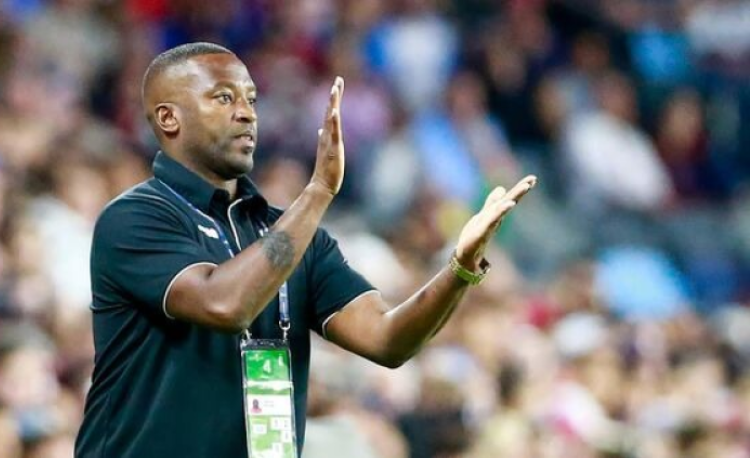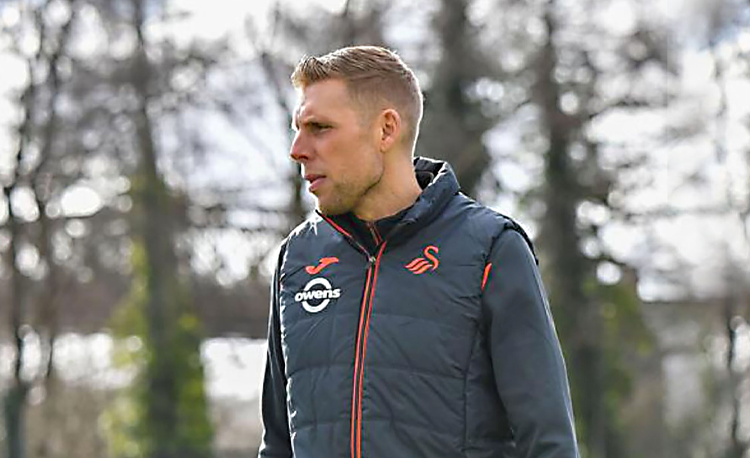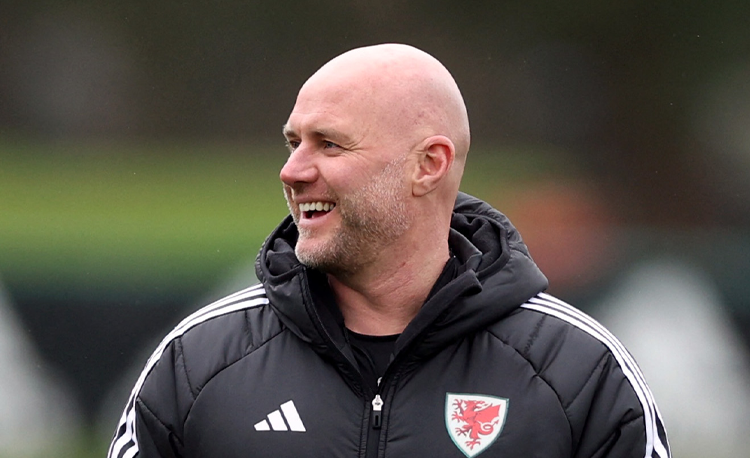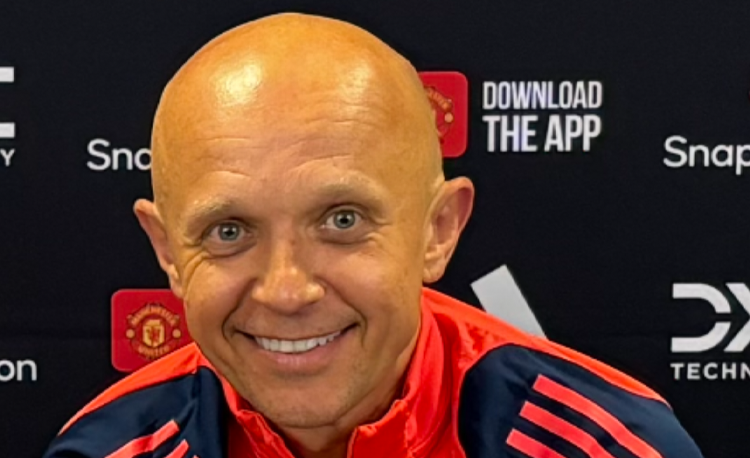You are viewing 1 of your 1 free articles
Attacking session utilising the overload
The session concentrates on finishing, while making sure we utilise our spare player in attacking positions.
| Area | Up to 36x44 yards |
| Equipment | Balls, bibs, mini goals, full size goals |
| No. of Players | Up to 20 players + 2 goalkeepers |
| Session Time |
3v2s: 30mins |
The session concentrates on finishing, while making sure we utilise our spare player in attacking positions.
I believe it is a fun and engaging session for the player, and it’s also an opportunity to work the number 9 and 10 with different scenarios using the overload, looking at overlapping, underlapping or just supporting the two attackers.
It is a session I like to run once a week for attacking players but I also like the realism for the centre-forwards, goalkeepers and defenders who will, at some point in a game, have to deal with the overload.
3v2s
We set up in an area using the width of the penalty area, 36 yards long, with the edge of the penalty box used as the halfway line and lines extended from the six-yard box. A full size goal is at either end, with a goalkeeper in each, while nine reds and nine blues line up as shown, with the coach on the sideline.
The ball starts with the attacking team (reds), a red player behind the touchline, who plays the ball into the centre-forward, who makes a run onto the pitch. The player who played the initial ball, plus another red player from the other side of the goal, enter the pitch to attack - with two blues entering from the opposite end to defend.
The attacking team look to use movements, including underlaps and overlaps, support from behind and diagonal runs, in order to enact a successful attack. The defenders must engage high up, encouraged by the coach on the 18-yard line [1a].
[1a]
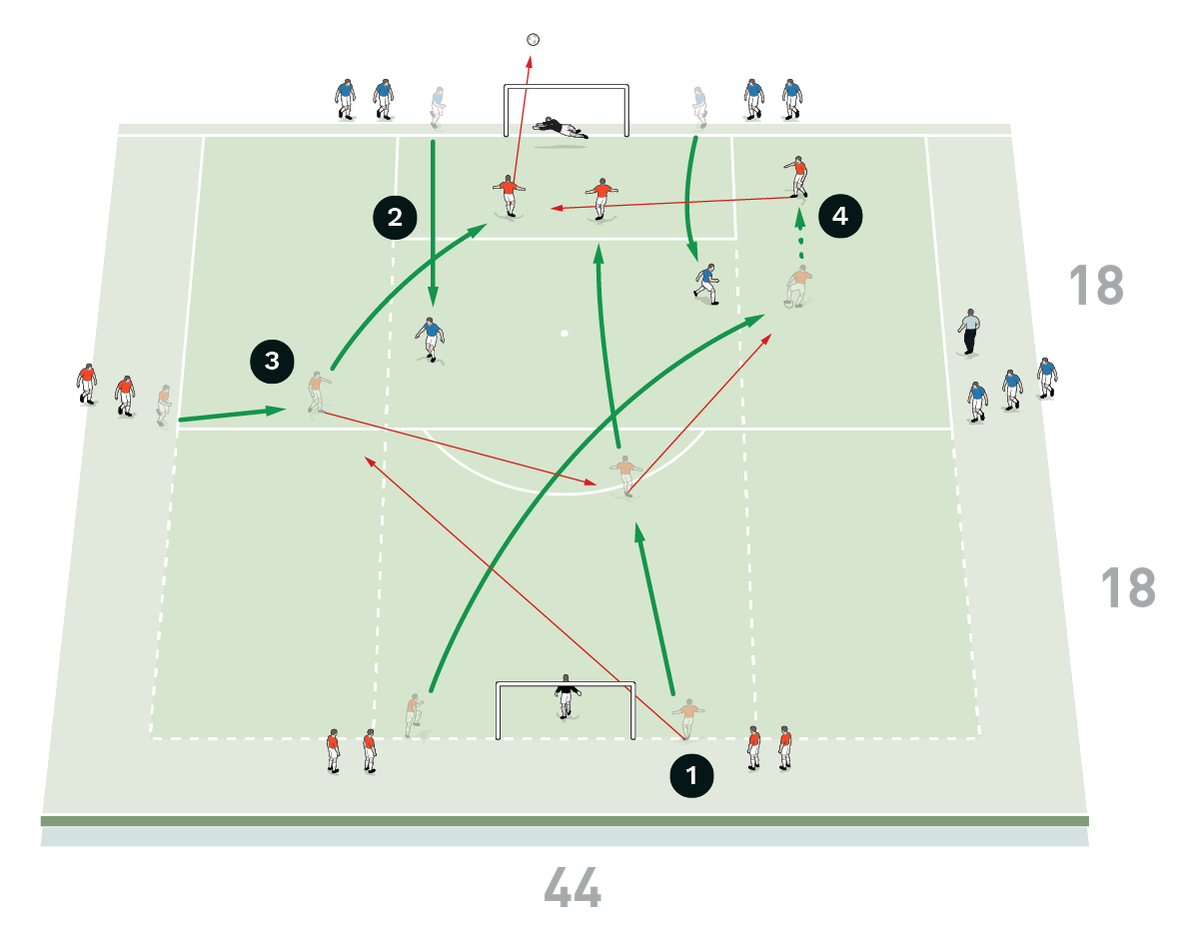
-
The ball starts with a red player and is played into the centre-forward
- Two blues enter the pitch to defend
- The centre-forward returns the ball then makes a run into the middle
- The third attacker makes an overlapping run out wide to receive the ball, crossing for an onrushing attacker to finish
We progress the 3v2s to create game realistic problems for the defenders. Who should they mark? Do they go all the way to meet the attacker or worry about vacating space? There’s also the consideration of the different angles that can be made in defence and attack [1b].
[1b]
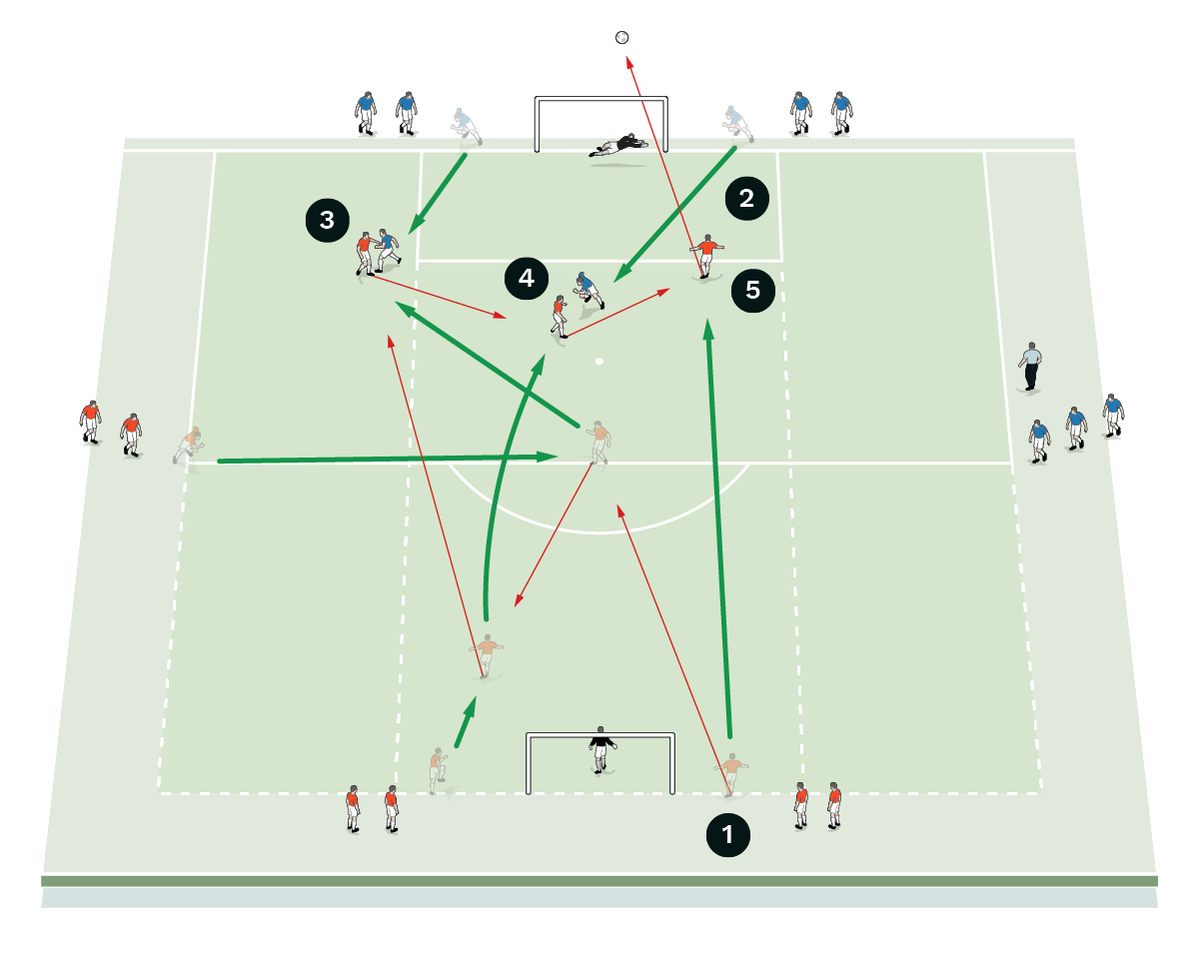
-
The ball starts with a red player and is played into the centre-forward
- Two blues enter the pitch to defend, looking to solve the game realistic problem
- The centre-forward returns the ball then makes a run to receive possession again out wide
- They cut the ball back for their team-mate - who is engaged by a defender
- They play the ball to the right for the third attacker to run on to and shoot
“ The attacking team look to use movements, including underlaps and overlaps, support from behind and diagonal runs, in order to enact a successful attack”
Overload games
We set up in an area 20x40 yards, with three channels marked out across – 5-10-5 yards – and two full size goals at either end of the central channel, with a goalkeeper in each. There are six attackers (reds) and four defenders (blues), noted as shown. One red will start with the ball from one side of their goal and progress to engage the goalkeeper in a 1v1.
Once the play has ended, this red player will then jog back and receive the ball from a team-mate on the other side of their goal. At this point a blue defender will enter the pitch to make a 2v1 situation [2].
[2]
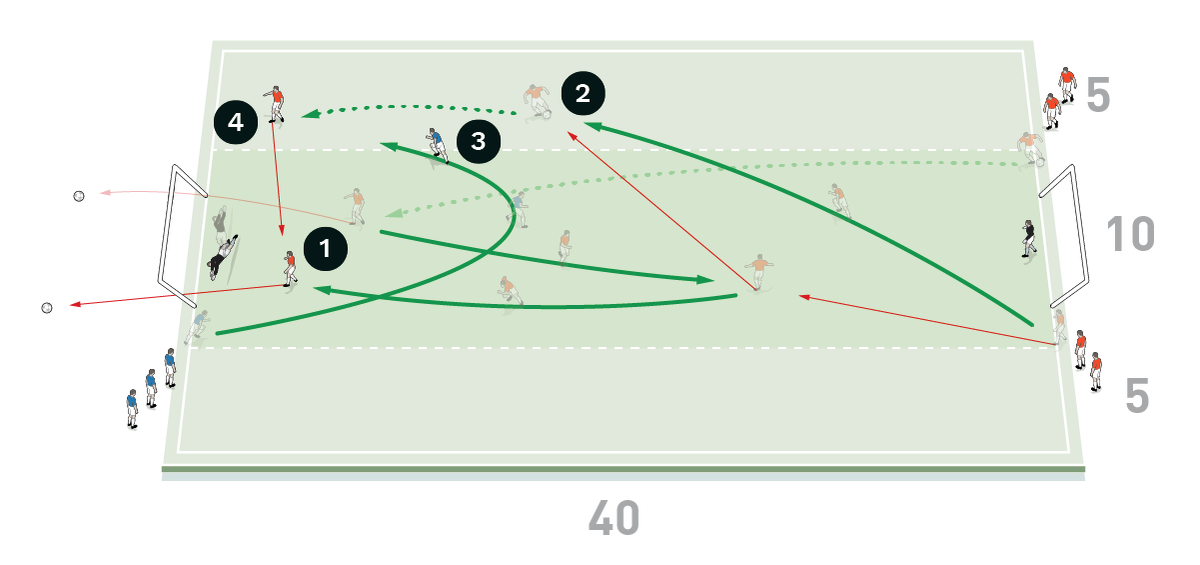
-
The red attacker runs through to beat the goalkeeper
- The player jogs back to receive another ball from a team-mate - who then plays the ball outside for a third red player
- The game is now 2v1
- The red attacker crosses for their team-mate to finish
Once the play has ended, another red and another blue join, making the game a 3v2. This carries on until all players are on the pitch.
“If you’re looking at breaking offside traps in a game situation you may need double movements, so we will be looking for this from the attackers”
COACHING POINTS
What are key things to look out for technically/tactically?
There are specific elements, such as precision in terms of ball striking of pass and shot. You’re also looking at progressing the receiving skills and connection from the centre-forward.
There will also be a lot to consider in terms of runs - and timing of runs - on the overlap/underlap/in support. A patient approach in how the attackers use the spare player will also be worth focusing on, as will the types of finish to look for - be it in the corners or through the goalkeeper’s legs, for example.
What are the typical mistakes that players might make and how do you avoid them?
To shift and unbalance the defensive team you need good movement and timing of overlapping runs. Many teams now play with a high line. If you’re looking at breaking offside traps in a game situation you may need double movements, so we will be looking for this from the attackers.
Related Files
Editor's Picks
Deep runs in the final third
Using the goalkeeper in build-up play
Pressing principles
Intensive boxes drill with goals
Penetrating the final third
Creating and finishing
My philosophy
Pressing initiation
Compact team movement
Coaches' Testimonials

Alan Pardew

Arsène Wenger

Brendan Rodgers

Carlos Carvalhal

José Mourinho

Jürgen Klopp

Pep Guardiola

Roy Hodgson

Sir Alex Ferguson

Steven Gerrard
Coaches' Testimonials

Gerald Kearney, Downtown Las Vegas Soccer Club

Paul Butler, Florida, USA

Rick Shields, Springboro, USA

Tony Green, Pierrefonds Titans, Quebec, Canada
Join the world's leading coaches and managers and discover for yourself one of the best kept secrets in coaching. No other training tool on the planet is written or read by the calibre of names you’ll find in Elite Soccer.
In a recent survey 92% of subscribers said Elite Soccer makes them more confident, 89% said it makes them a more effective coach and 91% said it makes them more inspired.
Get Monthly Inspiration
All the latest techniques and approaches
Since 2010 Elite Soccer has given subscribers exclusive insight into the training ground practices of the world’s best coaches. Published in partnership with the League Managers Association we have unparalleled access to the leading lights in the English leagues, as well as a host of international managers.
Elite Soccer exclusively features sessions written by the coaches themselves. There are no observed sessions and no sessions “in the style of”, just first-hand advice delivered direct to you from the coach.
